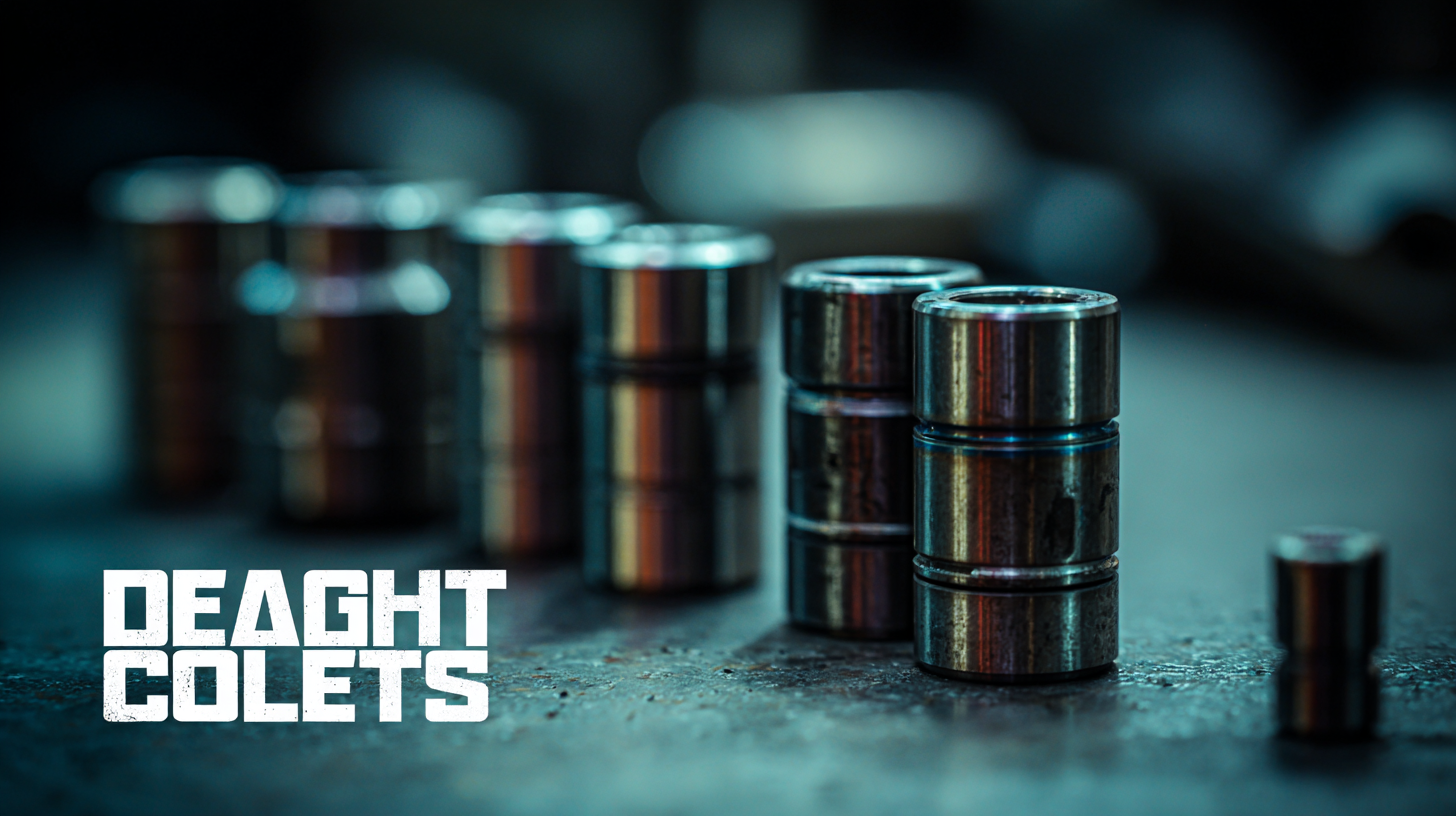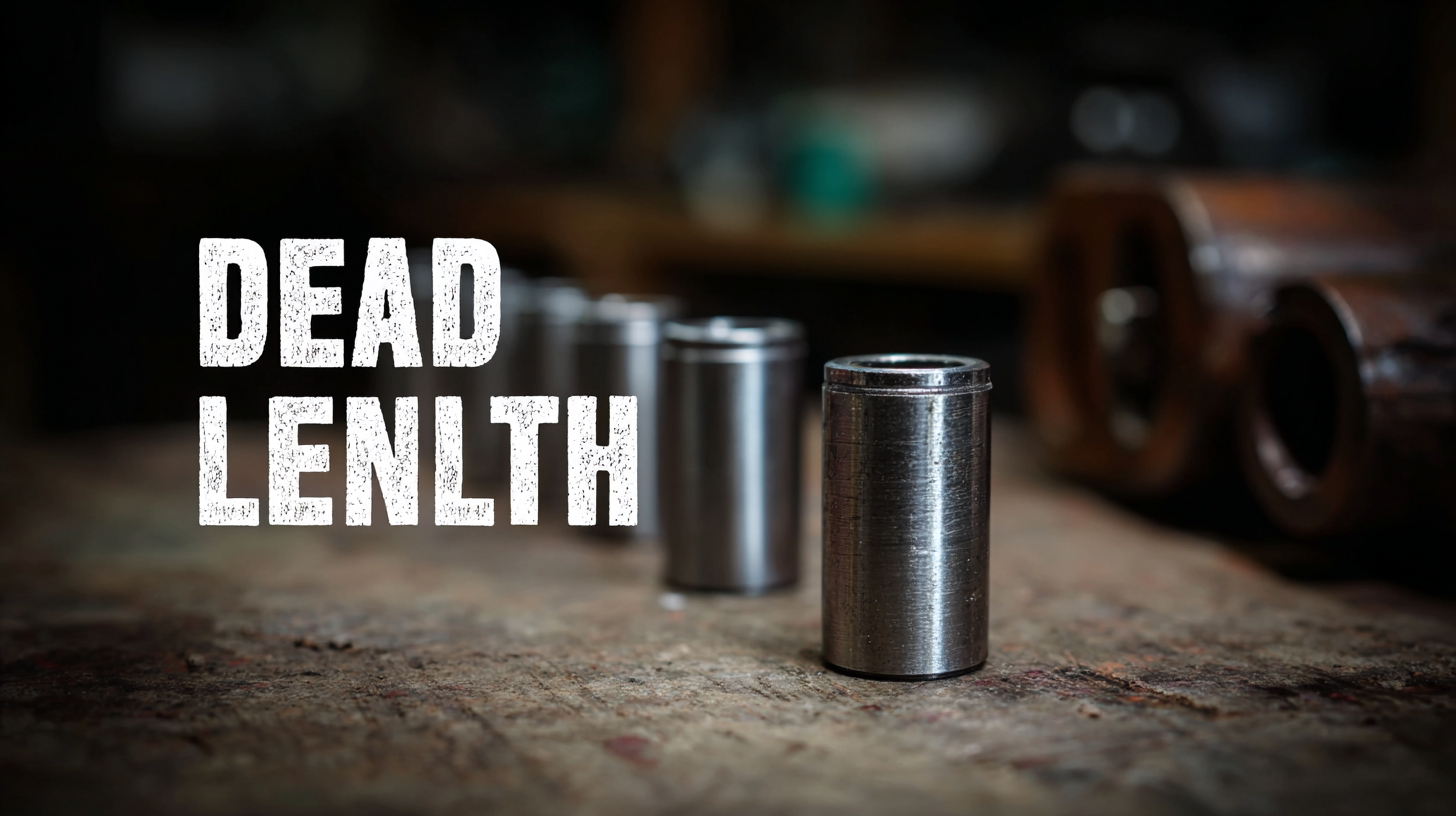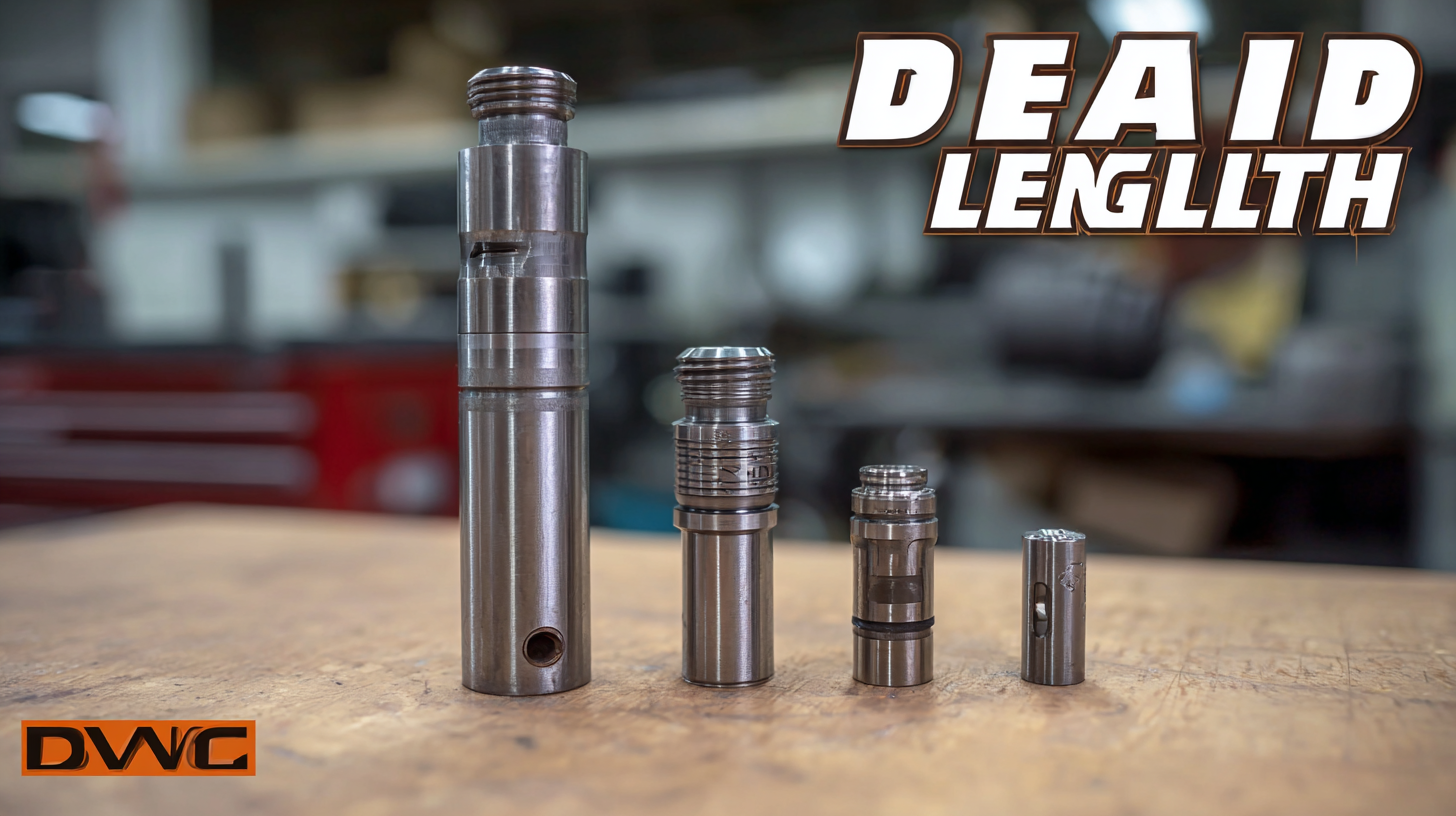
- sales@bjbod.com
- Mon - Sat at 7:00AM to 9:00PM

When it comes to precision machining, the choice of equipment can significantly impact both the quality and efficiency of your operations. One essential tool in the machining process is the Dead Length Collets, which play a crucial role in maintaining accuracy and consistency during workpiece clamping. However, with various types and sizes available in the market, selecting the best Dead Length Collets for your specific machining needs can be a daunting task.

This blog aims to guide you through the essential factors to consider when choosing these collets, including material compatibility, size specifications, and the type of machining operations you intend to perform. By understanding the different examples and applications of Dead Length Collets, you will be better equipped to make an informed decision that enhances your machining efficiency and productivity.
Dead length collets are essential tools in precision machining, designed to securely grip workpieces while ensuring minimal displacement during the machining process. The primary function of a dead length collet is to maintain the length of the workpiece constant while it is being machined, which is crucial for achieving high accuracy and repeatability. According to a report by the Association for Manufacturing Technology (AMT), implementing dead length collets can improve production efficiency by up to 25%, making them a valuable asset for manufacturers aiming to enhance their machining processes.
When selecting the best dead length collets for your machining needs, it’s important to consider factors such as material compatibility, concentricity levels, and gripping force. A study published in the International Journal of Advanced Manufacturing Technology indicates that the right choice of collet can significantly reduce cycle times and tool wear, further optimizing the machining workflow. For instance, choosing a collet with a higher gripping force can allow for greater stability and precision when working with challenging materials like titanium or high-carbon steel, where traditional collets may falter. Understanding these functionalities and their implications is crucial for any machinist looking to enhance their operational efficiency.
| Feature | Description | Benefits |
|---|---|---|
| Accuracy | Provides precise clamping of the workpiece | Reduces machining errors |
| Material Compatibility | Compatible with various materials like metal, plastic, and composites | Versatility in applications |
| Ease of Use | Quick setup and alignment of workpieces | Saves time in production processes |
| Size Range | Available in various sizes to accommodate different workpieces | Flexibility for different projects |
| Durability | Made from high-quality materials for long-lasting use | Reduces replacement costs |
When selecting dead length collets for machining needs, it's essential to understand the various alternatives available and their specific advantages.
According to a recent report by the Machinery Industry Association, precision collets can enhance tool performance by up to 30% due to improved clamping accuracy.
Dead length collets, which maintain consistent lengths throughout a machining cycle, are especially beneficial for high-volume production where repeated accuracy is crucial.
Comparatively, traditional collets may offer greater versatility, but they often lack the repeatability that dead length collets provide.
A study published in the Journal of Machine Tools revealed that using dead length collets can reduce setup time by as much as 20%, significantly increasing productivity in environments where time is money.
Furthermore, advancements in materials have allowed for the development of hybrid collets that offer the benefits of both dead length and traditional designs, providing operators with more options to meet specific machining needs while maintaining cost-effectiveness.
When selecting dead length collets for your machining operations, several crucial factors should guide your choice. Firstly, the material compatibility is vital; you need to ensure the collet can handle the type of material you’re working with, whether it's steel, aluminum, or plastics. Different materials can affect tool life and performance, so assessing the wear resistance and clamping force is essential. Additionally, consider the specific dimensions and tolerances required for your project, as the precision of the collet can significantly impact the machining accuracy.

Another important aspect is the collet's type and design. Dead length collets are available in various designs tailored for specific tasks; understanding the application can lead to more efficient machining. For instance, if your work involves long, slender parts, a collet with a longer gripping range and greater stability is preferred. Furthermore, evaluate the collet's compatibility with your existing tooling system. Ensuring that the collet integrates seamlessly with your setup will enhance overall efficiency and reduce downtime. By focusing on these factors, you can select the best dead length collets that meet your machining needs effectively.
When selecting the best dead length collets for your machining needs, it’s crucial to understand the advantages and disadvantages of the various types available. Dead length collets are known for their ability to provide better gripping power and accuracy, making them ideal for precision machining applications. One significant advantage of these collets is their reduced setup time, as they allow for a quick changeover without requiring extensive adjustments. This efficiency is essential for high-production environments where time is money.
However, it is important to consider the drawbacks as well. Dead length collets may not be as versatile as other collet types, limiting their use in certain scenarios. Additionally, they can be more expensive initially, which may deter some small operations from investing in them. Balancing these factors against your specific machining requirements and the expected outputs can guide you toward the most suitable collet type for your projects. Understanding these trade-offs will ultimately lead to better decision-making in your machining operations.
This chart illustrates the relative advantages and disadvantages rating of different types of dead length collets utilized in machining. The higher the score, the more benefits and fewer drawbacks a specific collet type has. Standard collets lead in overall performance, while bent collets present various challenges.
In the realm of machining, dead length collets are becoming increasingly popular for their ability to provide efficient and precise gripping solutions, particularly in complex setups. A recent study highlights that shops utilizing specialized collet blocks report a significant reduction in setup times, with advancements in design allowing for quicker changes between parts. This shift is largely due to the enhanced versatility offered by dead length collets, which excel in gripping round, hex, and other geometrically challenging components without the drawbacks associated with standard vises or 3-jaw chucks.
Micro-part collets have also emerged as game-changers, especially in applications utilizing subspindles. Their proprietary designs focus on delivering clamping force precisely where it's needed, thus ensuring a secure and concentric grip even for the smallest parts. Industry statistics indicate that such innovations have cut cycle times by as much as 20%, significantly boosting productivity in high-precision machining environments. The growing reliance on dead length collets is not just a trend but a strategic move towards more agile and efficient manufacturing processes, emphasizing the importance of selecting the right collet type to align with specific machining needs.
